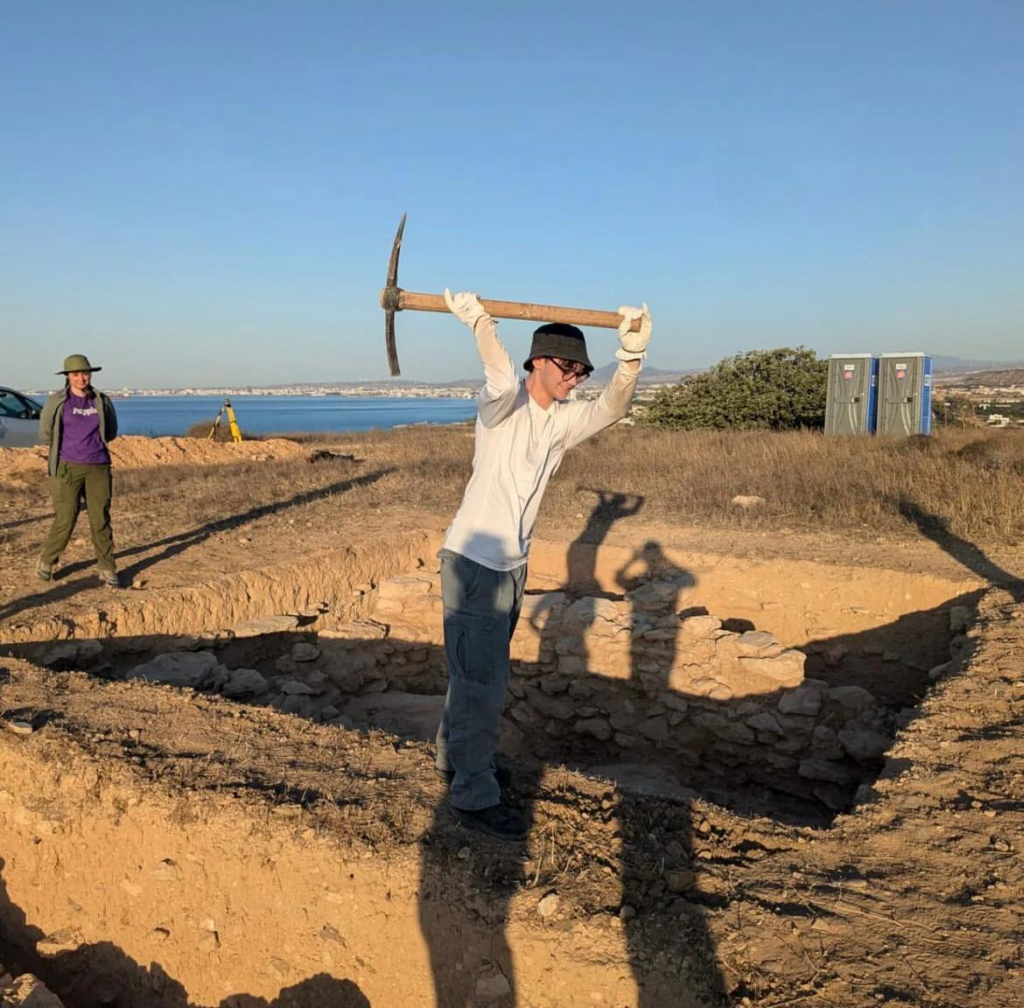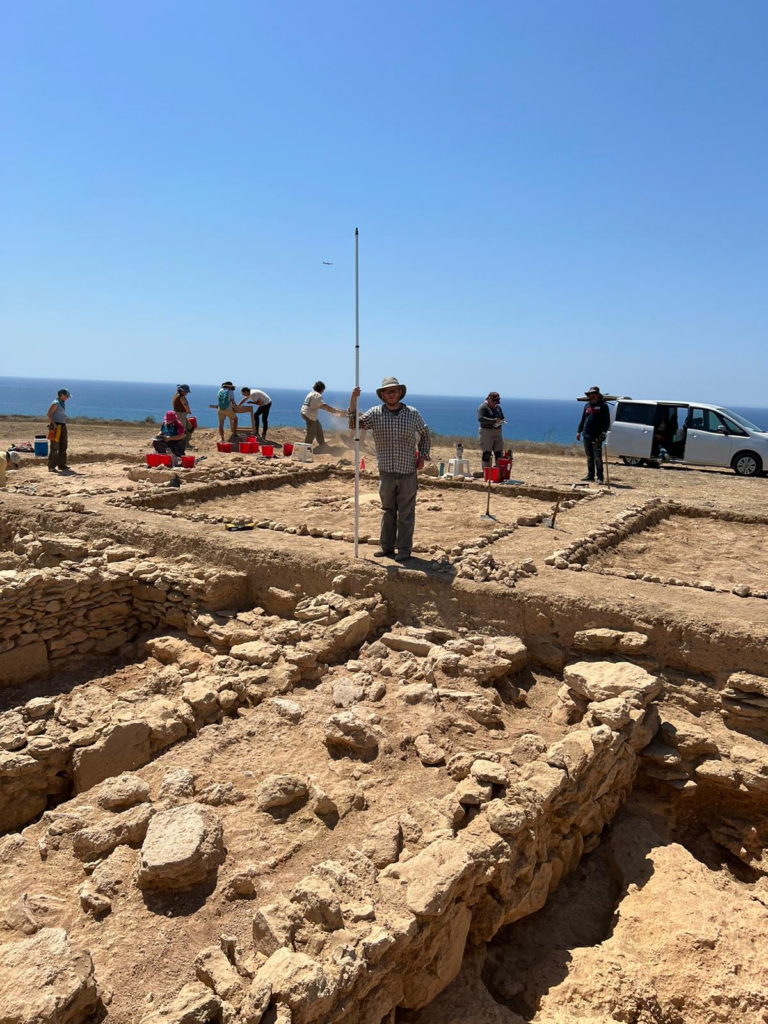Mason Ross:
On our first official dig day on-site, Riley, Laila, and myself were drafted into the excavation of EU 28. Instead of the usual 5m by 5m square, our unit is a strip of dirt maybe 2 or 3 feet wide in between two stone walls. We started digging strong and determined under the supervision of Brandon Baker (aka Philly Brandon).

I took the first turn breaking up the topsoil with a full-sized pickaxe. The sun had just risen and the day was still fairly cool leaving me full of optimism and hubris. I’ve been helping my dad dig up soil and tear down decks and old buildings for years now, how different could it be? As the morning wore on, the very large, very bright, and very hot difference made itself clear. Wielding a pickaxe and tureya in 75 degree heat while the sun was still making its way up was very different than doing the same in 90 degree heat with the sun directly overhead, trying its best to scorch anything in sight. I am a Pacific Northwesterner through and through, 90 degrees at home feels like the end of days is upon us. I had rarely experienced, let alone worked in, heat and humidity like that. After the initial shock, intermittent breaks, and being scolded by Tom to drink more water every 10 minutes, I slowly acclimated to the heat, and work continued undeterred on our bulk.

EU 28 rewarded us on the first day with an iron spear head so heavily encrusted with rusty slag its shape was barely discernible. I doubt any of us would have known what we were looking at if not for Brandon’s expertice. The find so early in the process bolstered my spirits and let me forget my aching muscles.
We got through topsoil and more recent layers of deposition quickly enough, fueled by ongoing games of 20 questions. We continued our efforts with hand picks, brushes, and dust pans, turning up bag after bag of pottery. Progress slowed when my personal nemeses began to appear, lodged deep in the soil. Instead of a flat surface on which to scrape and sweep we were now forced to maneuver our way around dozens of rocks, large and small, likely tumble from either of the two walls beside us. Finding rocks in dirt is certainly not an unusual discovery, but without the ability to pull them out until we reached the level below them (to ensure they were not part of some wall or feature) we were forced to work around them making our already narrow bulk even more cramped. Digging around rocks wasn’t all bad, though. Nestled at the base of a particularly large, flat rock on the south end of the unit, we uncovered the bent tang of an iron arrow head and several large pieces of ceramic vessels.

On our last dig day of the week, we finally got far enough to safely pull out many of the rocks. My satisfaction was immense after the hours of frustration attempting to sweep loose dirt out of the cracks between rocks. At that depth, the surface of EU 28 was about level with the surface right before the western wall. In the coming days our little bulk will expand to include everything inside the walls. We’ve grown attached to our unit. It’s exciting to see it go from a walking path between two different trenches to its own enclosed space with architecture and functions still to be discovered.
